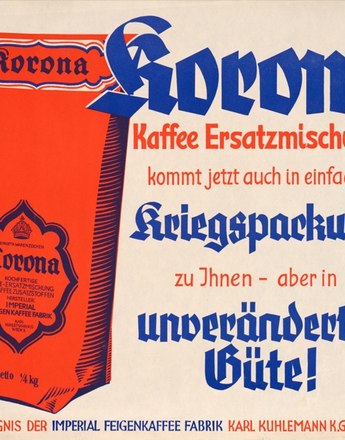The Story of ‘Bombenpeter’ and ‘Blockaden-John’
One of the ways in which children were confronted with the events of the war was in the books written specifically for them during that time. These were intended to persuade children and their parents of a particular interpretation of the war. The heroic representation of their own nation and the alienized depiction of the enemy made it clear how children and adults alike were expected to perceive the war.
At the beginning of the war there was particularly wide interest in war-themed children’s books and their educational role. New works came onto the market and publishers hastened to issue war versions of popular classics. These publications were intended to persuade children of the purported causes and aims of the war. Illustrated copies in particular were full of national stereotypes intended to familiarize their young readers with the ‘good Central Powers’ and to stigmatize the enemy nations. Packaged in child-centred stories, propaganda messages were transported via emotive images.
A good example of this can be seen in the Kriegs-Struwwelpeter (‘War Struwwelpeter’), a new edition of this highly popular children’s book published in 1915. A year earlier a satirical English version of Struwwelpeter had appeared in Britain, making fun of the German Kaiser. Written by Karl Ewald Olszewski, the Kriegs-Struwwelpeter includes war-themed subjects, modifying the familiar figures accordingly: Struwwelpeter mutates into the villainous ‘Bombenpeter’, an impersonation of King Peter I of Serbia, while Suppen-Kaspar (Kaspar Who Would Not Eat Any Soup) becomes ‘Blockade-John’, Zappel-Philipp (Fidgety Phillip) is transformed into the Italian Zappel-Pepo who sits with Father Germany and Mother Austria at table and falls down (a reference to Italy’s perceived betrayal), and John Guck-in-die-Luft (Johnny Head-in-Air) is drowned in the Dardanelles.
In Die Geschichte von den schwarzen Buben (‘The Story of the Inky Boys’) the good boy Michl is teased by three ‘bad boys’. The latter personify Allied politicians and are illustrated with stigmatizing attributes: Tsar Nicholas holds a bottle of vodka, while the French president Raymond Poincaré bears a pretzel with a scroll inscribed ‘Revenge’ and the British foreign minister Sir Edward Grey wields a pennant bearing the word ‘Envy’. The verses relate how the envious boys try to take away Michl’s garden from him. Kaiser Wilhelm intervenes and throws them into an ink-pot. The story thus conforms to a typical propaganda topos: the alleged unprovoked aggression perpetrated by the Allies on the Central Powers.
In the war version of Struwwelpeter the enemy states are embodied by the misbehaved children, while Austria and Germany are represented by the parents, appearing as positive authorities. The enemy states are portrayed not only as perfidious, delinquent and wicked but also as clearly inferior. The message to young readers was unequivocal: Austria and Germany would win the war and their wicked and inferior enemies would receive just punishment.
Other books for children and teenagers also contained mostly heroic accounts of the war, telling of successful combat operations at the front and the heroism of young volunteers. Largely fictional accounts of experiences at the front fanned enthusiasm for the war, providing boys in particular with brave heroes to idolize. These featured young soldiers sacrificing themselves heroically for the Fatherland, escaping parental authority and experiencing exciting adventures on the battle field.
As the war continued these narratives moved closer to what their readership was actually experiencing, adopting new themes (prisoners of war, rationing, et cetera), and eventually started to lose their persuasiveness. Nonetheless, what linked all these publications over the years were the emphatically propagated ideals of self-denial and the performance of one’s duty together with their appeal to the self-sacrificing patriotism of the younger generation.
Translation: Sophie Kidd
Demm, Eberhard: Deutschlands Kinder im Ersten Weltkrieg. Zwischen Propaganda und Sozialfürsorge, in: Militärgeschichtliche Zeitschrift (2001), 60, 51-79








